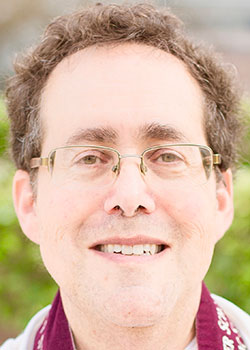I remember a regular spring ritual when I was still a congregational rabbi. The event took place on a Sunday morning, as I and thirty eager people would drive down to Laguna Beach. Not to play volleyball, and not to bask in the glorious California sunshine. Our purpose was much more sacred and venerable than all that. These 30 people were among the 100 students who had completed my Introduction to Judaism class, and were now intent on converting to Judaism.
That process, of joining the destiny and faith of the Jewish people, of making our special brit with God their own is an ever-inspiring story. It takes great courage and persistence to study the teachings of Judaism, to take on the mitzvot as personal obligations, and to willingly join a persecuted people.
The steps of conversion are found explicitly in the Talmud, and the rabbis of antiquity traced one of the requirements for conversion to today’s Torah portion. The Torah reads: "Hear out your fellow, and decide justly between anyone and a fellow Israelite or ger (stranger or convert)." The rabbis understand the requirement of "decide justly" (u’shfatem tzedek) as establishing the rule that "a conversion requires three judges. Building on that Talmudic base, Rabbi Yehudah established that "one who is converted by a beit din is indeed a convert; one who converted by himself is not a convert."
Thus the key to a traditional Jewish conversion is the interview before the Beit Din-the religious court of three observant Jews. After a ritual immersion in a mikvah or the ocean, after either brit milah (ritual circumcision) or hatafat dam brit (taking of a drop of blood to symbolize ritual circumcision for one already medically circumcised) for the male convert, all converts must then appear before the Beit Din to demonstrate that they are sufficiently knowledgeable in Judaism and are interested in converting for sincere motives. Finally, each convert must explicitly accept the authority of Jewish law in its totality.
That last requirement is particularly ironic today, when so many Jews who are born to this wonderful heritage live much of their lives without reference to the mitzvot and the depth of the halakhah. While conversion to Judaism has always required (and still does require) explicit affirmation of the commandments, many people who are lucky enough to be born Jewish don’t even pause to consider the place of the mitzvot in their lives.
Several years ago, the Orthodox, Conservative, and Reform rabbis of Denver cooperated on joint standards to conversion. Those standards included a (1) commitment to regular Torah study as a continuing process, (2) certain minimal ritual practices (fasting on Yom Kippur, affixing a mezuzah on the doorpost, candle-lighting on Shabbat and festivals, regular attendance at communal worship on Shabbat and festivals, maintaining a level of kashrut (the dietary laws), and (3) acts of lovingkindness (such as giving to tzedakah, affiliation and involvement with a synagogue, a commitment to the Land of Israel expressed in a promise to travel to Israel, and a commitment to create a Jewish home in which all children would receive a Jewish education.
Those standards were a minimum expected to make entrance into the Jewish people more than just the addition of a new label. Yet I wonder how many of us, born into Judaism, could rise to the challenge of taking on those standards as our own?
In an age in which people are free to abandon their Judaism at will, in a time when so many Jews are raised without a Jewish education and lack the experience of Judaism in the home, we are all - in a very real sense - potential converts to Judaism. We each face a personal decision, whether or not to make Judaism something central to our identities and our lives, whether we are willing to grow to make the words of the Shema our own personal pledge of allegiance.
Like our ancestors standing at the foot of Mt. Sinai, we have the power to affirm the gift that God offers us, or we can spurn that gift. A continuous legacy stretching across the millennia, a wise and joyous way of life that links the generations, a rich relationship with God and a sacred way of life - these riches are ours as a birthright, if only we are willing to accept them.
Perhaps now is a time to rise to the standards of those faithful people - the converts who bathed in the waters of Judaism for the first time, and those steadfast Jews who continue to act as beacons of light and fidelity by living their Judaism.
Perhaps now is the time to just say "yes."
Shabbat shalom.

